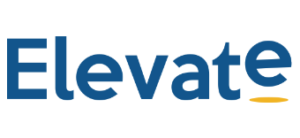If you find it challenging to find the right talent, you’re not alone.
According to a survey of 40,000 employers conducted by Manpower Group, 45% of employers say that they can’t currently find the workers with the skills they need.
This statistic means that there’s more competition than ever before when it comes to attracting and retaining highly-qualified candidates. That competition is just one factor changing the landscape of talent acquisition – technology and changing attitudes towards labour are also playing their part.
If you’re going to attract and retain the best talent in 2021, you’ll need to keep on top of the latest trends. Let’s dig deeper into six unmissable 2021 talent acquisition trends.
2021 Talent Acquisition Trends
These are the six most prominent 2021 talent acquisition trends, but we’d love to hear your thoughts or suggestions too. Be sure to let us know if there’s another trend that you’re particularly excited about in 2021.
1. More companies will adopt cutting-edge talent acquisition technology
There’s no question that as we enter the brave new world of Recruitment 4.0, technology is transforming the very notion of talent acquisition.
Advancements to AI mean that HR departments can use cutting-edge talent acquisition technology to level-up their performance and find the right candidates. As talent acquisition platforms continue to mature throughout 2021, we can expect to see HR departments use them to:
- Reduce unconscious bias
- Automate time-consuming and repetitive activities
- Pinpoint the best candidates from within a talent pool
- Effortlessly increase hiring volume
- Auto-screen candidates
We’re excited to see how companies continue to make the most of talent acquisition technology and how those platforms will enhance the performance of HR professionals.
2. Businesses will focus on mentoring and training to retain talent
According to the Association for Talent Development (ATD), those companies that offer comprehensive training programmes enjoy a 218% higher income per employee.
Top candidates also expect to receive training: 87% of Millennial employees state that career growth opportunities are an essential factor when deciding whether to remain at a company.
Over the course of 2021, we’ll be sure to see more businesses invest in robust mentoring and training programmes to attract top talent. Those mentoring and training programs can help businesses to get the most from their team members while also fostering a sense of loyalty and belonging.
3. Remote Work
If 2020 was the year that remote work became the norm, 2021 is sure to be the year that candidates expect it. It’s fair to say that with many businesses working from home for a large part of the last year, workers have proven that for many industries business can carry on, as usual, no matter where they are. While there have been hundreds of stories about the death of the office, no workplace will expect to shut down its base entirely as there are some huge advantages of all being able to work together in the same space. However, candidates will expect a level of flexibility in their future workplace, and for many, it could be a deciding factor in whether they accept a job. Not only will remote working help you to attract top talent, but it will also widen the available talent pool as you’re no longer limited to a commutable area. If the possibility of remote work hasn’t been factored into your recruitment strategy for 2021, it’s time to ensure it is.
3. Ambitious companies will invest heavily in employer branding to attract top talent, reduce costs and enhance engagement
Employer branding sounds fancy, but as we know, it merely refers to a company’s reputation as an employer.
Given that it’s so difficult for companies to attract the best talent at the moment, they must invest in employer branding to stand out from the competition and entice the most sought after candidates.
TalentNow found that 84% of job seekers say the reputation of a business as a potential employer is crucial to them when making decisions.
Over the course of 2021, we’re confident that more companies will invest in employer branding to attract the best talent. We’ll see lots of companies take a combination of the following steps:
- Audit their existing employer brand
- Define a strong employee value proposition
- Craft a definite and clear culture
- Manage their online reputation
- Encourage employees to become energetic advocates
Are you looking for an innovative and effective way to boost your employer brand in 2020? We have three words for you: corporate alumni network.
For more information, please read our guide on why building a corporate alumni network makes sense for your business.
4. Workplaces will become more diverse (and prosper for it)
By now, countless studies have demonstrated that diverse workplaces benefit from increased creativity, different perspectives, higher innovation and much more.
This is why achieving true workplace diversity has become an essential goal for businesses in recent years. HR departments around the world now place a strong emphasis on assembling diverse teams that include people with different characteristics.
Over the course of 2021, we’ll continue to see ambitious HR departments bring together a range of diverse candidates. Those departments will use several vital techniques to promote and manage diversity in the workplace.
Here are just some of the principal techniques that HR managers will use:
- Talent acquisition technology will help mitigate unconscious bias
- Diversity-friendly workforce policies will accommodate for a range of profiles
- Mentorship programs will give every team member the chance to advance
- Clear internal communication will contribute to an open and respectful atmosphere
5. Direct Sourcing & Building Talent Pools
Hiring wasn’t a priority for many in 2020, and while most industries and their employees embraced a new way of working there is no doubt 2021 saw a lesser focus on recruiting for new positions due to uncertainty and budget constraints. When the pandemic hit organisations and their service providers looked towards Direct Sourcing and building talent pools to reduce the cost of the search. A talent pool is a collection of candidates who are passionate about your brand and want to work for you. By using keep warm strategies like email attraction campaigns, you can keep these candidates interested in your business until a role becomes available. In 2021, if hiring still isn’t a realistic prospect, building a curated talent pool could be.
6. Businesses will offer competitive perks to secure the best talent
When it comes to the dynamics surrounding talent acquisition, the ball is most certainly in the court of talented and in-demand candidates. If you’re going to attract them to your business, you’ll need to offer a suite of competitive perks.
Nowadays, those candidates expect their salaries to be complemented by a range of non-monetary benefits that keep them happy and engaged. 48% of candidates weigh benefits and perks when deciding on their next role.
We expect that over the course of 2021, businesses will revise the suite of perks that they offer to attract top talent. Here are just some of the most sought after perks that you can use to sweeten the deal:
- Private insurance
- Performance bonuses
- Flexible schedules
- Employee development programs
- Gym memberships
- Stock options
- Employee discounts
Unlock the Power of AI-Driven Talent Intelligence with Elevate Direct
Are you ready to leverage the power of AI in 2021 to build an instantly qualified pipeline of talent? Learn more about how the Elevate Platform can help you to retain, engage and attract the best talent for your organisation.

